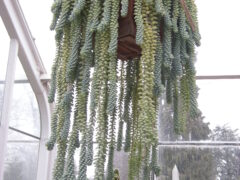
burro’s tail
Sedum morganianum 'Burrito'
Cascading, spindle-shaped, silver-green leaves tumble and cascades up to 24″ or more. Native to southern … Continued
Drought-tolerant and drought-resistant plants may still need supplemental water from time to time, but they can survive periods of dryness without dying.
Drought-resistant plants like cactus, hens and chicks, and sedums can go for very long periods without water and do not tolerate poorly drained locations. Drought-resistant tropical plants grown indoors in winter like cactus, Sansevieria, Echeveria, and other succulents sometimes fail due to overwatering.
Drought-tolerant plants grow in many textures and sizes and have different adaptations that help them get through periods of drought:
The latter two types of plants are drought tolerant once established because any new planting, regardless of drought tolerance, needs to be watered during the first growing season to allow roots to reach the depths needed to access moisture during dry periods.
It’s also important to note that survival may not mean that the plant will look its best during this time. Watering weekly for a longer period of time will result in the best-looking gardens with the highest tolerance for drought. During the hottest, dryest times in summer, watering deeply twice a week is recommended. These less frequent waterings will encourage root systems to expand, making it easier for plants to access moisture when their environment is dry.
Winter drought has become a bigger problem in recent years as snowfall declines. Evergreen plants are especially vulnerable during winter drought because their foliage continues to shed moisture while dormant deciduous plants have shed their leaves and can conserve moisture in woody stems and underground. Watering shrubs and trees in winter on days when the temperature allows (above freezing) will help ensure their healthy return in spring.
Here are some drought-tolerant and drought-resistant plants to grow—

Sedum morganianum 'Burrito'
Cascading, spindle-shaped, silver-green leaves tumble and cascades up to 24″ or more. Native to southern … Continued
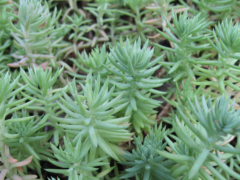
Sedum reflexum ‘Blue Spruce’
Thin, evergreen, spiny blue foliage radiates around the central stems that cascade over container sides … Continued
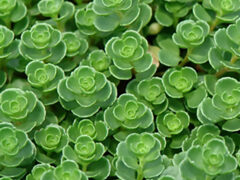
Sedum spurium ‘John Creech’
Dr. John Creech, former director of the U.S. National Arboretum, discovered this Sedum in the … Continued

Sedum 'Sunsparkler Cherry Tart'
An excellent addition to rock gardens and pathways. Vibrant, colorful foliage attracts pollinators for a … Continued
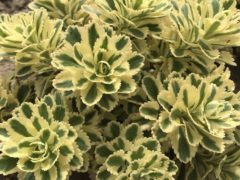
Sedum takesimense 'Nonsitnal' Atlantis®
Tight rosettes of notched, deep green succulent leaves edged in broad, creamy yellow margins. Plants … Continued
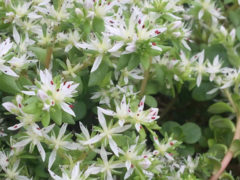
Sedum ternatum
This small, spreading native perennial typically occurs in damp locations along stream banks, bluff bases … Continued
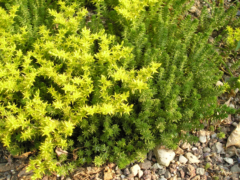
Sedum sexangulare
Super low, 4″ mat of very fine green foliage is covered with yellow flowers in … Continued
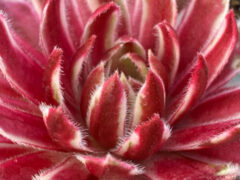
Sempervivum species
Little ‘chicks” cluster around the larger rosette “hen” making perfect little rock garden perennials that … Continued
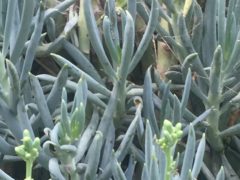
Senecio serpens
Powdery blue-green fleshy tubular leaves provide color and texture contrast in succulent collections. A great … Continued
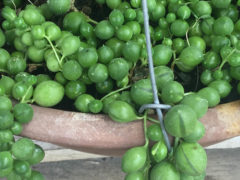
Senecio rowleyanus
This unusual-looking succulent sprawls over container edges in strands resembling a beaded necklace, with fleshy … Continued
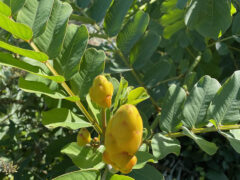
Senna alata
A showy addition to any garden, large round leaves fold up at night. Large, upright, … Continued
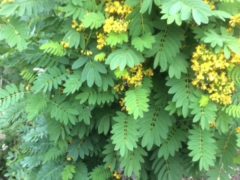
Senna hebecarpa
Round, pea-like foliage on 4-6′ tall plants with dark yellow, pea-like blooms in summer. We … Continued